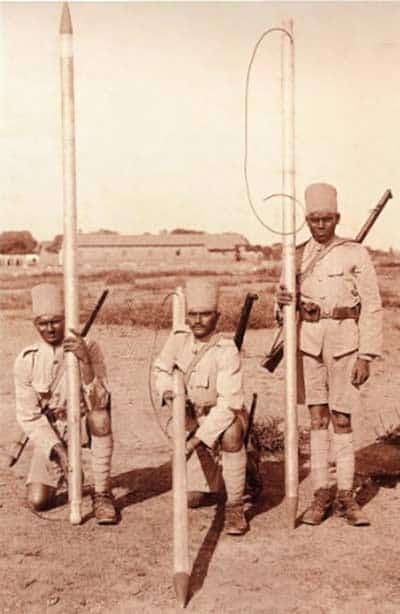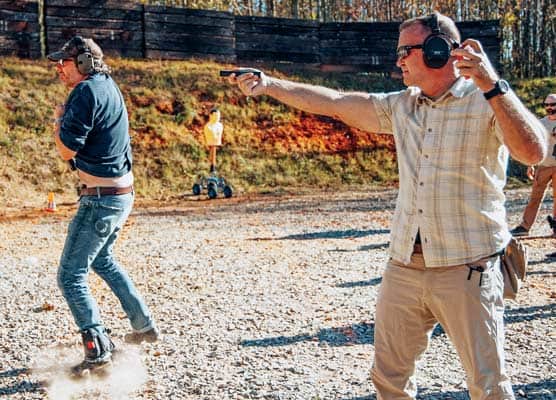The Bangalore Torpedo
The Manliest Weapon In Human History
What’s the hardest thing you’ve ever done? For most of us, that might be a daunting project at work, a particularly onerous scholastic pursuit, or perhaps some self-inflicted physical challenge. Young soldiers in combat, however, take that to a whole new level. There is little in the vast pantheon of human experience more grueling than breaching an enemy’s prepared defenses.
That we as a species invest so much time, effort, and treasure in ripping the very life out of our fellows is honestly pretty darn weird. However, that is indeed our sordid lot. It has forever been thus.
Having spent eight years in uniform myself, I can tell you that some military jobs are tougher than others. Flying helicopters in the Army meant living in a tent and going long periods without a shower. However, that was nothing compared to the year I spent with a light infantry brigade. Grunt life is everything it is rumored to be.
Those guys were not necessarily the sharpest knives in the rack, but they sure had heart. There is a bond among infantrymen that the rest of the world simply cannot understand. That’s because these hard, fit, young troops are called upon to do some very, very difficult things.
What follows is more accurately the responsibility of the combat engineers than the infantry, but the concept is common between the two professions. Even this deep into the Information Age, sometimes the only way to accomplish the mission is to have some brave young stud creep up into the machine gun fire and just do the deed. The fortitude it takes to do that simple thing under fire is simply breathtaking. Now, hold that thought …
Etymology
Bangalore is the capital and largest city in the southern Indian state of Karnataka. Despite sporting a population of 11 million (about twice the population of Arizona) people and being the 27th-largest city in the world, I don’t think I’ve ever met anyone who has been there. This sprawling metropolis lends its name to one of the simplest yet most audacious weapons mankind has ever devised.
In 1912, a British Army officer named R.L. McClintock was a member of the Royal Engineers attached to a Madras Sappers and Miners unit of the Indian Army posted in, you guessed it, Bangalore, India. A sapper is a specially trained combat soldier whose job is to breach fortifications, build bridges, emplace and clear minefields, and blow stuff up. Sappers are also trained to fight as provisional infantry. In my experience, they are all just a little bit crazy.
Capt. McClintock was faced with the unenviable task of clearing mines and booby traps left over from the Second Boer War as well as the Russo-Japanese conflict. Modern war will hopelessly contaminate a space. What might have begun as a pastoral countryside ends up a deadly hellscape of lethal contrivances that far outlast the original scrap. There are large swaths of Europe that remain uninhabitable even today because of residual detritus from World War I. In Capt. McClintock’s case, he grew weary of having to get so close to these derelict explosive devices. He needed a way to render them safe from a position of relative comfort. His answer was an exceptionally simple yet timeless weapon.
The Tool
Capt. McClintock’s contrivance has come to be known as a Bangalore Torpedo. You may also hear it referred to as a Banger, a Bangalore or a pole charge. In its most basic form, the Bangalore Torpedo is simply a steel or aluminum pole packed with explosive and threaded on the ends. A blunt cap can be affixed to the far end to make the rig easier to shove across dirt and obstacles. By threading various sections together, the Bangalore can be made as long or short as desired.
The theory is that sappers can creep up to a combat obstacle, most commonly concertina wire or something similar, slide the Bangalore underneath the tangle, and prime it with a standard military blasting cap. Touching this puppy off, then blows a 3 to 4-meter-wide path through the wire to make way for assault troops. Check out the Steven Spielberg classic “Saving Private Ryan” for a visual example.
The problem is that all such obstacles are covered by fire. Think mortars, artillery or machine guns. Getting close enough to shove a big honking pipe into the wire while somebody is shooting at you is easier said than done.
Modern Treatment
WWII-vintage Bangalore sections were five feet long and weighed 13 pounds apiece. Each section contained nine pounds of 80-20 amatol explosive with a TNT booster. These evolved versions were held together via spring clips rather than threads.
Today, the U.S. Army still maintains the M1A2 and M1A3 Bangalore Torpedoes in inventory. The Brits call theirs the L26A1 Advanced Performance Bangalore Torpedo. Rocket-propelled versions make things a bit safer, I suppose, but not by any great margin. At the end of the day, even in modern war, some poor, unfortunate slob still has to creep up to the front and just get the job done. I find such bravery simply breathtaking.







